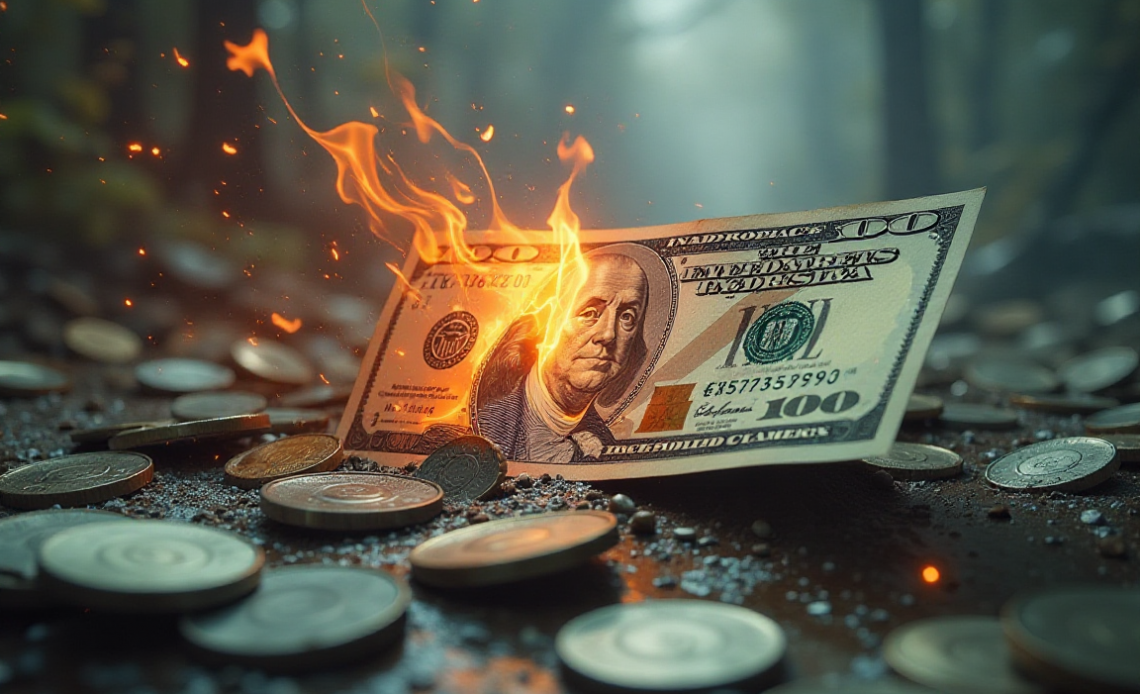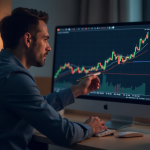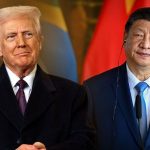
For the first time since the collapse of Bretton Woods in 1973, the US dollar has fallen more than 10% in a single half-year.
The decline is sharp, but not entirely surprising. When a confluence of erratic fiscal policy, rising debt, and institutional uncertainty all come together, something is bound to break.
Confidence in the silverback is shuttering and investors are desperate for alternatives.
Why is the US dollar collapsing?
The data is clear. The US dollar index, which measures the greenback against six major currencies, is down almost 11% for the first half of 2025.
That’s the steepest drop in over 50 years. And this time, it’s not due to an oil shock or a currency crisis abroad. It’s homegrown.
It began with “Liberation Day” on April 2, when President Donald Trump announced aggressive tariffs on imports from nearly all major trading partners.
The fallout was immediate. US markets lost $5 trillion in value within three days.
Treasuries saw a wave of selloffs. Confidence in the predictability of US policy broke down.
Related: Are Trump’s tariffs really making America Great Again?
A 90-day pause on tariffs came a week later, but the message was already sent: the world’s largest economy was entering a phase of self-inflicted volatility.
It’s not about a recession confirmation or a visible economic collapse. It’s about uncertainty.
Exploding debt and a shrinking fiscal anchor
Trump’s “One Big Beautiful Bill” is now moving through Congress.
If passed, it would extend his original tax cuts, dramatically reduce welfare spending, and increase borrowing.
The Congressional Budget Office estimates this could add $3.3 trillion to the US debt by 2034.
That would raise the debt-to-GDP ratio from 124% to well above 130%.
Moody’s responded by stripping the United States of its last AAA credit rating in May.
For investors, this wasn’t just a symbolic downgrade. It was a wake-up call.
US Treasuries, which are considered the global anchor asset, are now being questioned.
Foreign ownership of US government bonds is starting to thin out.
According to Apollo, it currently stands at $7 trillion.
Reserve managers are no longer treating US debt as risk-free.
The Fed’s new predicament
Layered onto this is a growing concern about the independence of the Federal Reserve.
Trump has publicly called for aggressive rate cuts to offset his tariff-driven growth slowdown.
Markets are now pricing in two to five rate reductions by the end of 2026.
This puts the Fed in a bind. If it cuts rates to support growth, it weakens the dollar further.
If it holds steady, financial conditions tighten into a trade and debt storm.
Either way, the dollar loses its appeal. It’s a lose-lose.
At the same time, inflation is creeping in through the side door.
Despite headline rates dropping from 3% in January to 2.3% in May, import prices are rising.
The cost of capital is rising. And expectations are starting to change.
Sell America?
In past crises, money rushed into the dollar. This time, it’s flowing out. That’s a notable break in the pattern.
Foreigners own $19 trillion in US equities, $7 trillion in Treasuries, and $5 trillion in corporate bonds.
That’s a massive exposure to dollar-linked assets.
The data tells the story. Rotation out of the US is accelerating.
European equities, measured by the Stoxx 600 index, are up 15% year-to-date. In dollar terms, that’s a 23% gain.
German and French bonds are seeing strong inflows as investors search for policy stability.
Gold has also surged to record highs, driven largely by central banks diversifying out of dollar reserves.
According to the IMF, the dollar still accounts for 57% of global foreign currency reserves. But reserve data lags.
What’s happening now is behavioral. Countries aren’t dumping dollars. They’re hedging against them.
A “euro world order”
The euro is up 13% this year, surprising analysts who had forecast parity.
Rather than collapsing under weak EU growth, it has benefited from comparative calm.
For emerging markets, the weaker dollar is good news, at least for now.
Countries like Ghana, Zambia, and Pakistan carry large amounts of dollar-denominated debt.
A falling dollar makes their debt burden more manageable.
Commodity-exporting nations are also benefiting. Oil, metals, and agricultural goods priced in dollars become more valuable when the dollar falls.
For exporters like Indonesia, Nigeria, and Chile, the dollar’s weakness is a revenue boost.
One underreported consequence of this volatility is playing out in Europe’s corporate treasury departments.
According to Bloomberg, daily volumes of currency options hit a record in April. BNP Paribas says corporate FX option sales have doubled year-over-year.
What the market is really saying
This isn’t just about trade. It’s about trust.
The dollar remains the global reserve currency. But its premium is eroding.
Not because another currency is ready to take its place, but because investors no longer see the US as the stabilizing force it once was.
In previous cycles, the US outperformed because it was transparent, institutionally consistent, and fiscally disciplined. In 2025, all three pillars are shaking.
Foreign capital is no longer automatic. Dollar bonds are no longer neutral. And US equity outperformance isn’t guaranteed when measured in other currencies.
Investors need a new playbook
The dollar is still central to global finance. But that role is being hedged. Not just in central banks, but in private portfolios and corporate balance sheets.
This means more than just FX risk. It means repricing everything tied to US stability.
From sovereign debt premiums to venture funding cycles to M&A timelines.
And yes, it means gold is back in the conversation. Not as a bet on inflation, but as a hedge against institutional fragility.
Moreover, stablecoins are entering the frame with favorable policies. Perhaps this is not a coincidence.
2025 may be remembered not just as the year the dollar dropped, but as the moment it stopped being the default.
The safe haven has become a variable.
The post The 2025 US dollar crisis: why investors are rethinking safe havens appeared first on Invezz






